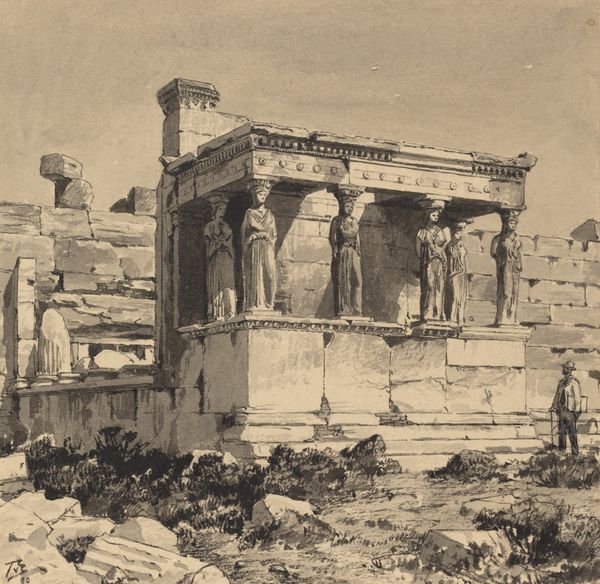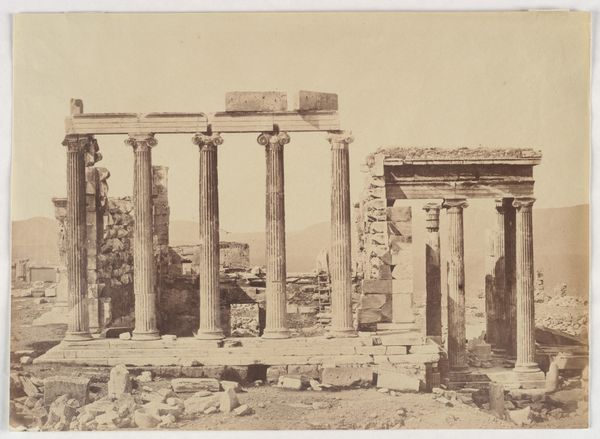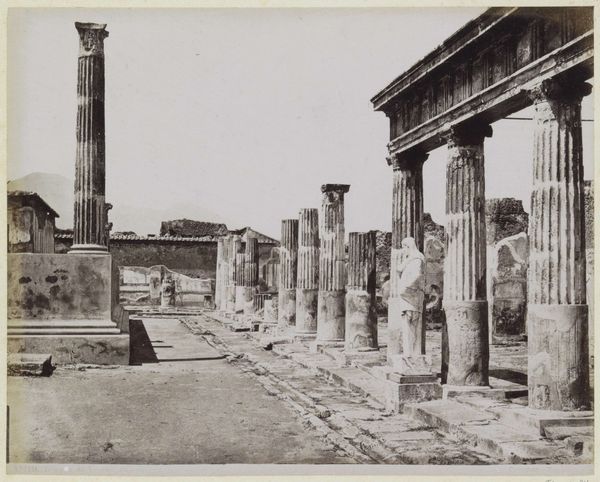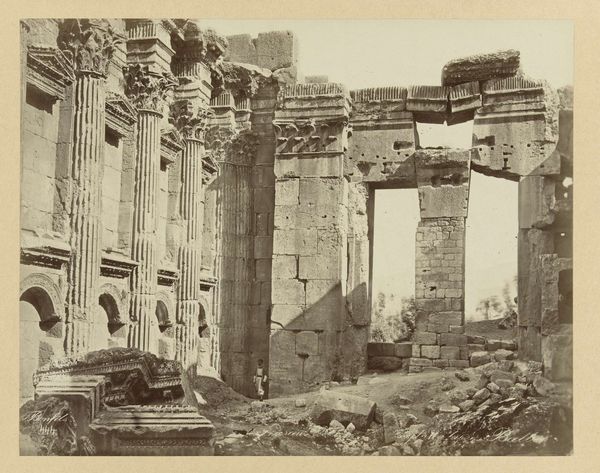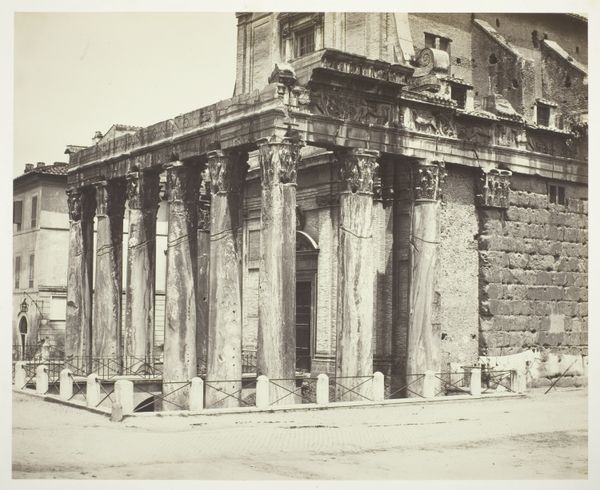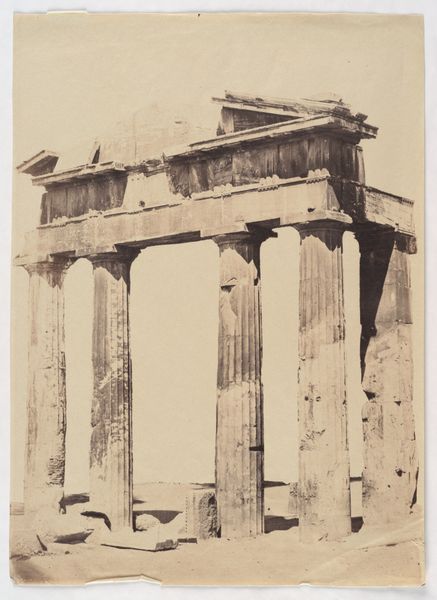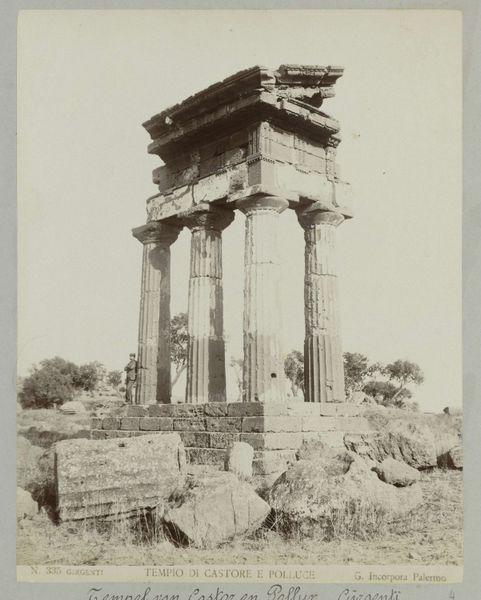
Dimensions: image (lunette): 14.7 x 11.3 cm (5 13/16 x 4 7/16 in.) sheet: 15.6 x 11.9 cm (6 1/8 x 4 11/16 in.) support: 48.8 x 33.7 cm (19 3/16 x 13 1/4 in.)
Copyright: National Gallery of Art: CC0 1.0
Editor: Here we have Themistocles von Eckenbrecher’s "Old Market Gate" from 1890, rendered in ink, pen, and charcoal. There's a haunting, romantic feel about this sketch – it looks both solid and ephemeral at the same time. What stands out to you when you consider this piece? Curator: Well, it strikes me as an insightful depiction of material degradation and labor within a rapidly changing urban context. Notice how the gate, likely once a symbol of civic pride and trade, is shown in a state of decay, almost like an archeological site in a modern area. Consider the socio-economic forces at play: The material itself - the stone - speaks of a specific geological source, the labor involved in quarrying, transporting, and constructing it. These processes are obscured by the ruins and the implication of earlier societal endeavors which now provide a scenic opportunity. Editor: So you're saying that even in ruins, the raw materials are telling us a story about the area? Curator: Precisely. And beyond that, observe the figures casually moving around this monumental ruin. Their garments and activities speak of the everyday economic life that has grown around the gate. How does this juxaposition speak to ideas of modernity and changing societal values? The gate’s materiality is still there, but its value to these people is very different. Do you get that impression? Editor: Yes, it does. The contrast really highlights the changes in the social structure over time. What once held so much value in the culture has slowly dissolved away into the day-to-day hustle and bustle. Curator: Exactly! Now the production of images supersedes all the labor invested in this earlier artifact. This work highlights how a shift in labor transforms our cultural relationship to matter and place. It invites questions about permanence and progress. Editor: This really broadened my view of how artistic interpretations can expose cultural transitions through the use and presentation of material. Thanks! Curator: My pleasure. It's essential to examine not just the 'what' of art, but also the 'how' and 'why' related to its creation and its continuing impact in changing hands throughout history.
Comments
No comments
Be the first to comment and join the conversation on the ultimate creative platform.
